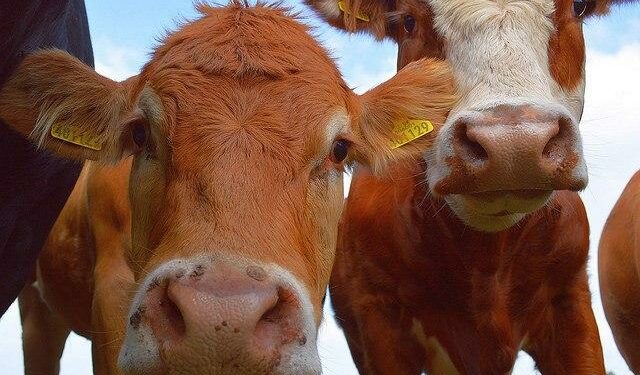Contemporary farming techniques heavily rely on the vital aspect of livestock accommodation. The structure and practicality of these shelters significantly influence the well-being, health, and efficiency of farm animals. Offering cozy and effective housing is not only crucial for maintaining animal welfare but also holds substantial weight in maximizing production and supporting eco-friendly farming methods. In this article, we’ll delve into the significance of meticulously planned livestock shelters and how they contribute to bettering animal welfare.
Establishing a Pleasant Atmosphere
The physical and mental well-being of farm animals greatly depends on comfortable housing. Thoughtfully designed livestock shelters ensure that animals live in a pleasant environment which enables them to display natural behaviors while minimizing stress.
Adequate space allocation is a fundamental consideration in livestock housing. Sufficient space allows animals to move freely, stretch their limbs, and interact socially, leading to improved physical and mental health. For example, in dairy farming, providing cows with spacious stalls that allow them to lie down, stand, and turn comfortably is essential for their comfort and prevention of injuries.
Proper ventilation is another critical factor in livestock housing design. Good air quality and proper ventilation help maintain a comfortable temperature, reduce humidity, and minimize the risk of respiratory diseases. Ventilation systems that facilitate the removal of stale air and the influx of fresh air contribute to the overall health and well-being of the animals.
Moreover, bedding plays a vital role in creating a comfortable environment. Clean, dry, and comfortable bedding materials, such as straw, wood shavings, or sand, provide cushioning, absorb moisture, and reduce the risk of injuries and infections. Regular cleaning and maintenance of bedding are necessary to ensure hygiene and animal comfort.
Enhancing Animal Health and Biosecurity
Well-designed livestock housing facilitates effective biosecurity measures, which are crucial for preventing the spread of diseases and maintaining animal health. Implementing appropriate design features and management practices help minimize disease transmission and improve overall biosecurity on the farm.
Proper segregation of animals is essential in livestock housing to prevent the spread of diseases between different groups. Separation by age, health status, or production stage minimizes the risk of disease transmission and allows for targeted management practices. This can be achieved through the use of individual pens, separate housing areas, or designated isolation spaces for sick or recovering animals.
Efficient waste management is another critical aspect of livestock housing design. Well-designed housing incorporates appropriate systems for manure storage, handling, and disposal. Effective waste management not only reduces odors and environmental pollution but also minimizes the risk of disease transmission and improves animal health.
Furthermore, the use of well-designed feeding systems and water supply systems in livestock housing ensures optimal nutrition and hydration for the animals. Properly designed feed troughs, automatic feeders, and water troughs help prevent feed contamination, reduce competition among animals, and ensure access to clean and fresh water. Adequate access to food and water is essential for animal health, growth, and productivity.
Promoting Efficient Management Practices
Efficient management practices are crucial for the smooth operation of livestock farms. Well-designed housing facilities contribute to streamlined workflows, improved labor efficiency, and reduced stress on both animals and farm personnel.
For instance, well-designed housing incorporates features such as a well-planned walkway, cattle gate, and an alley that facilitates efficient movement and handling of animals. This reduces the time and effort required for tasks such as feeding, milking, or veterinary procedures.
Furthermore, the integration of automation and technology in livestock housing can significantly enhance management practices. Automated systems for feeding, watering, and waste removal minimize manual labor, ensure consistency, and free up time for farmers to focus on other critical aspects of animal care and farm management.
Promoting Sustainable Farming Practices
Well-designed livestock housing can play a significant role in promoting sustainable farming practices. Sustainable farming aims to minimize the environmental impact of agricultural activities while ensuring the long-term viability of the farm. Livestock housing that incorporates sustainable design principles can contribute to these goals.
Effective utilization of resources like water and energy is crucial for sustainable livestock housing. Implementing water-saving methods, such as automated watering systems and smart irrigation techniques, can help lower water use and waste. Likewise, using energy-efficient lighting, well-designed ventilation systems, and insulation can decrease energy consumption and minimize the farm’s carbon footprint.
In summary, having well-planned livestock housing is vital for enhancing animal welfare, improving health, and encouraging efficient farm management practices. Cozy and streamlined housing offers animals a suitable environment, allowing them to engage in natural behaviors while decreasing stress and promoting their overall well-being. Furthermore, expertly designed housing aids biosecurity measures, disease prevention, and effective management practices – all of which are essential for lasting and responsible farming. By emphasizing the design and functionality of livestock housing, farmers can establish an environment that fosters the health, productivity, and welfare of their animals while securing the long-term success of their operations.





